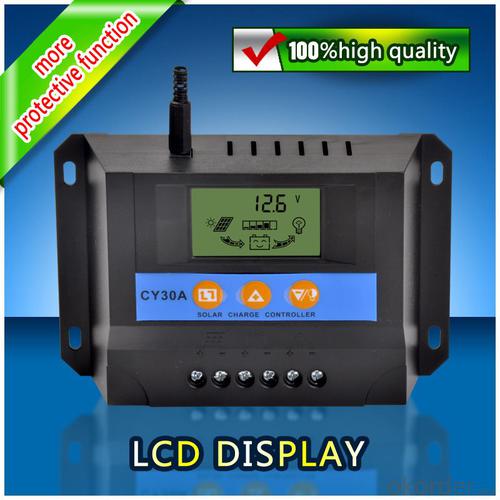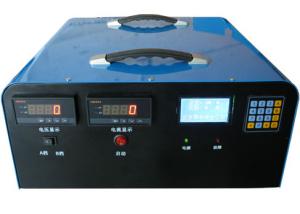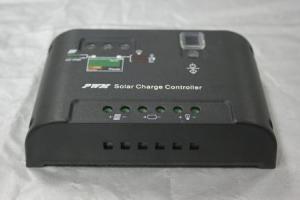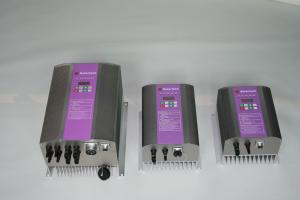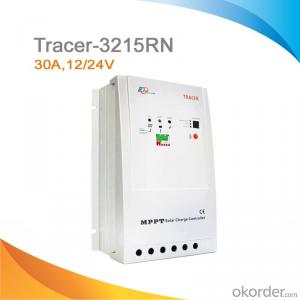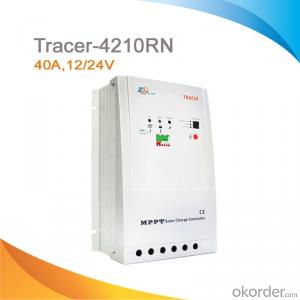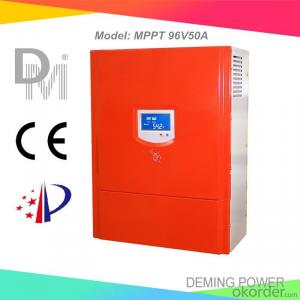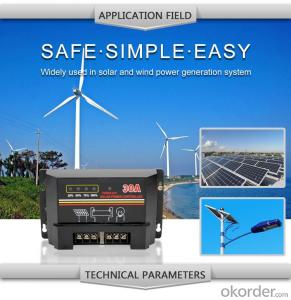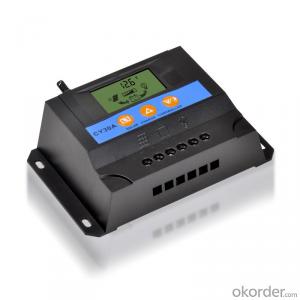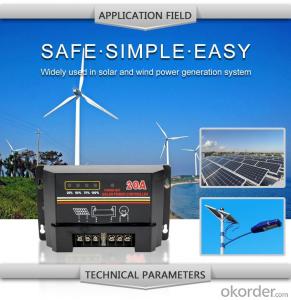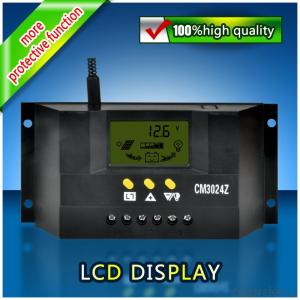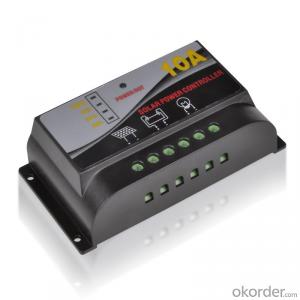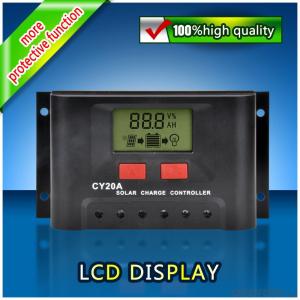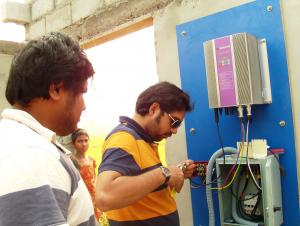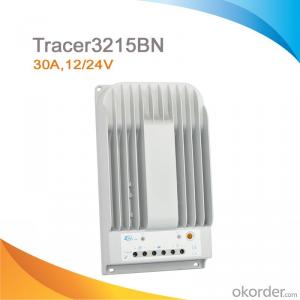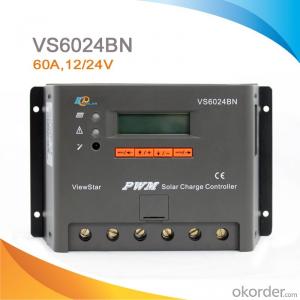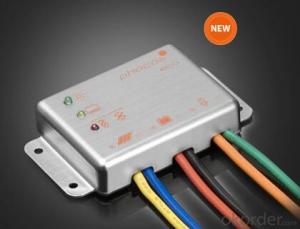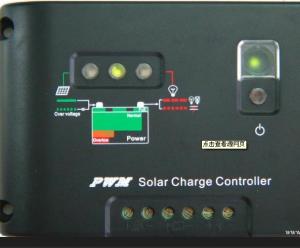Caleffi Solar Controllers - Solar LCD Controller CY30A, Hot-Selling, Best Price
- Loading Port:
- China main port
- Payment Terms:
- TT or LC
- Min Order Qty:
- 1 unit
- Supply Capability:
- 10000 unit/month
OKorder Service Pledge
OKorder Financial Service
You Might Also Like
Product Introduction
Solar controller is control device which can control solar panel and transform solar energy into electricity then store to the battery bank. Solar controller is the most important part in offgrid system, whose performance has much effect on life expectancy and operation of the whole system, especially the battery expectancy.
Application Areas
Standalone Photovoltaic power station
Standalone Domestic household photovoltaic power system
Mobil communication base stations, expressway and other non-residential regions.
Coastal islands, remote mountainous, border posts for regions shortage of or without electricity.
Government demonstration projects, landscape lighting project etc.
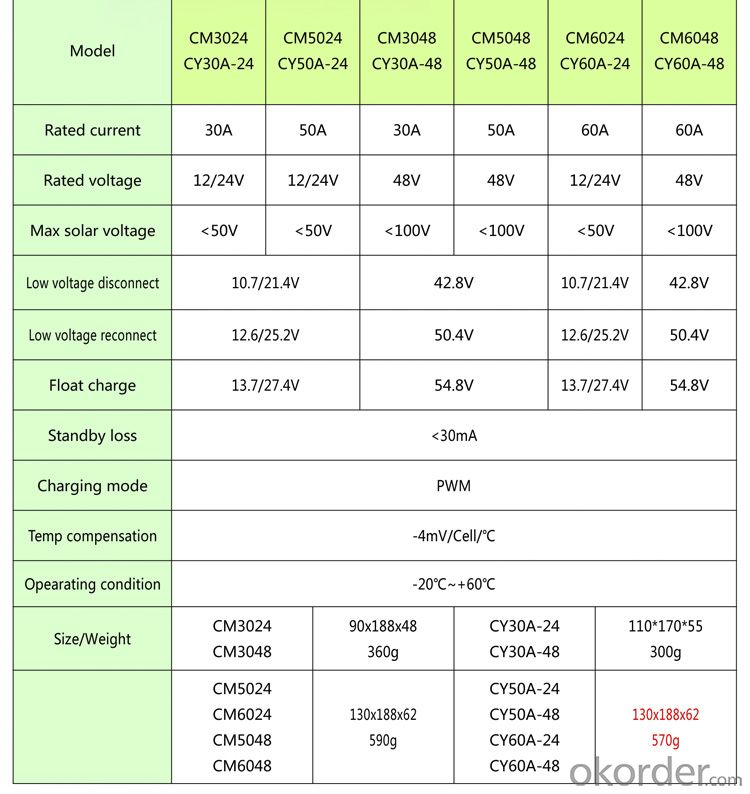
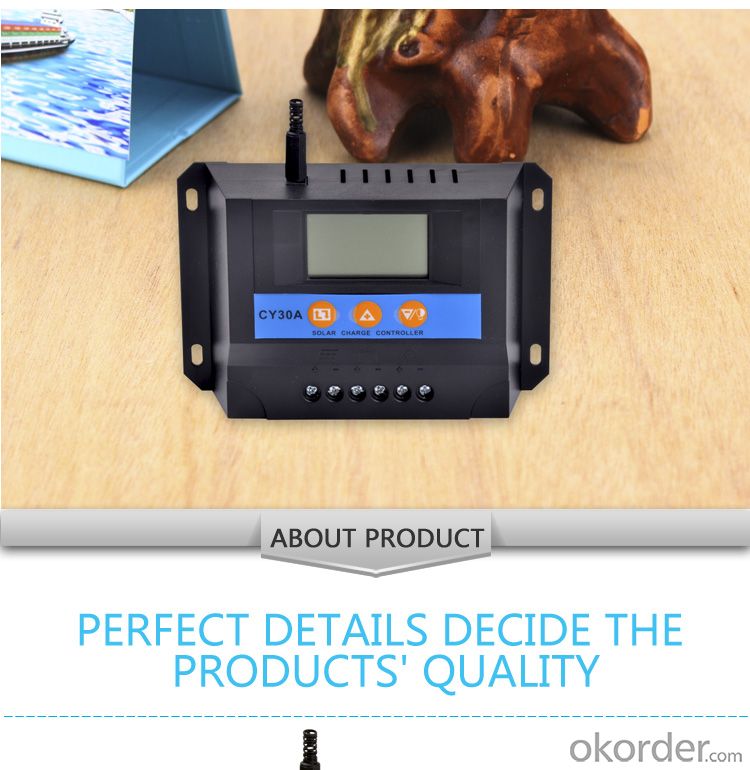
- Q: What is the role of a temperature sensor in a solar controller?
- The role of a temperature sensor in a solar controller is to measure the temperature of various components, such as the solar panels or batteries, and provide this information to the controller. This allows the controller to make adjustments and optimize the performance of the solar system based on the temperature conditions. For example, if the temperature exceeds a certain threshold, the controller may reduce the charging rate to prevent overheating and potential damage. Overall, the temperature sensor helps in maintaining the efficiency and safety of the solar system.
- Q: What is the maximum load power consumption for a solar controller?
- The maximum load power consumption for a solar controller depends on its specific design and capabilities. It can vary greatly, ranging from a few watts to several kilowatts, depending on factors such as the size of the solar array, the type of load connected, and the efficiency of the controller itself.
- Q: How do you determine the optimal charging voltage for your batteries using a solar controller?
- To determine the optimal charging voltage for batteries using a solar controller, one needs to consider the battery type and manufacturer's recommendations. The solar controller should be programmed or set according to these specifications to ensure the batteries are charged efficiently and safely. Additionally, monitoring the battery voltage during charging and adjusting the controller settings accordingly can help optimize the charging process.
- Q: Can a solar controller be used with solar-powered air conditioners?
- Yes, a solar controller can be used with solar-powered air conditioners. A solar controller is designed to regulate and optimize the charging process of solar panels, ensuring efficient power generation and management. Since solar-powered air conditioners rely on solar energy, a solar controller can help regulate and control the power flow from the solar panels to the air conditioner, maximizing its performance and energy efficiency.
- Q: Can a solar controller be used with PWM (Pulse Width Modulation) technology?
- Yes, a solar controller can be used with PWM (Pulse Width Modulation) technology. PWM technology is commonly used in solar charge controllers to regulate the charging and discharging of batteries in solar power systems. The controller uses PWM signals to efficiently control the flow of energy from the solar panels to the batteries, ensuring optimal charging and prolonging the lifespan of the batteries.
- Q: How does a solar controller handle load control and diversion charging?
- A solar controller handles load control and diversion charging through its built-in features and capabilities. Load control refers to the management of power distribution to various loads or appliances connected to the solar system. Diversion charging, on the other hand, involves the redirection of excess energy produced by the solar panels to charge additional devices or batteries. To handle load control, a solar controller typically offers multiple load terminals or outputs. These terminals can be connected to different electrical loads, such as lights, fans, or other appliances, allowing the controller to control the power flow and regulate the energy consumption of each load. This ensures that the available solar power is efficiently utilized and prevents overloading of the system. Diversion charging is achieved by connecting a diversion load, such as a dump load or a secondary battery bank, to the solar controller. When the solar panels generate more energy than the connected loads require, the controller diverts the excess power to the diversion load. This prevents the batteries from overcharging and maximizes the utilization of the solar energy. Solar controllers often employ sophisticated algorithms and monitoring systems to determine when to activate load control or diversion charging. These algorithms take into account various factors, such as battery voltage, solar panel output, and load requirements, to make intelligent decisions regarding power distribution and diversion. Some controllers even feature advanced MPPT (Maximum Power Point Tracking) technology, which optimizes the solar panel output and ensures efficient power conversion. In summary, a solar controller handles load control and diversion charging by providing multiple load terminals for power distribution and diverting excess energy to a diversion load. It utilizes algorithms and monitoring systems to make intelligent decisions and optimize the utilization of solar energy.
- Q: What is the display type of a solar controller?
- The display type of a solar controller can vary, but commonly it is an LCD (Liquid Crystal Display) screen.
- Q: How does a solar controller handle the communication with other devices?
- A solar controller typically handles communication with other devices through various protocols such as Modbus, RS485, or CAN bus. These protocols allow the controller to exchange data and instructions with devices like batteries, inverters, or monitoring systems. The solar controller acts as a central hub, collecting information from connected devices, sending commands, and ensuring coordination between them for efficient solar power management.
- Q: Can a solar controller handle power surges from the utility grid?
- No, a solar controller is not designed to handle power surges from the utility grid. Its primary function is to regulate and control the flow of power between the solar panels and the battery bank, ensuring optimal charging and preventing overcharging or damage to the battery. To protect against power surges from the utility grid, additional surge protection devices or equipment should be installed in the electrical system.
- Q: Can a solar controller be used with a solar-powered office building?
- Yes, a solar controller can be used with a solar-powered office building. A solar controller regulates the flow of electricity from the solar panels to the building's electrical system, ensuring optimal performance and preventing overcharging of batteries. It helps monitor and manage the solar power generated, making it suitable for use in a solar-powered office building.
Send your message to us
Caleffi Solar Controllers - Solar LCD Controller CY30A, Hot-Selling, Best Price
- Loading Port:
- China main port
- Payment Terms:
- TT or LC
- Min Order Qty:
- 1 unit
- Supply Capability:
- 10000 unit/month
OKorder Service Pledge
OKorder Financial Service
Similar products
Hot products
Hot Searches
Related keywords




